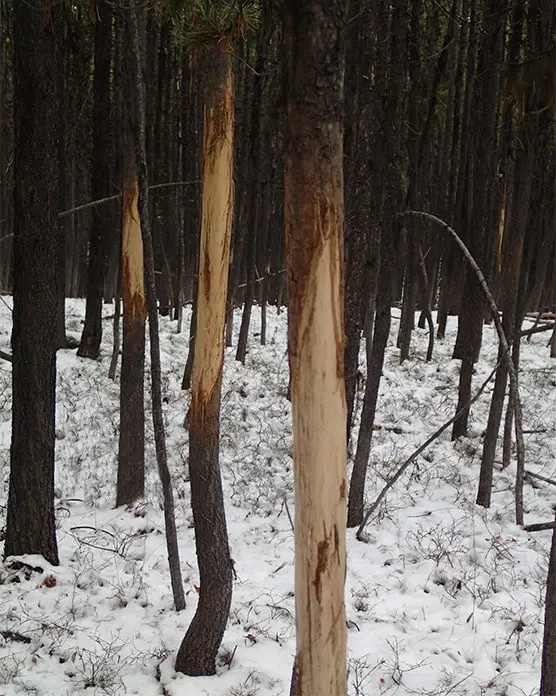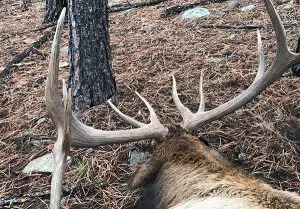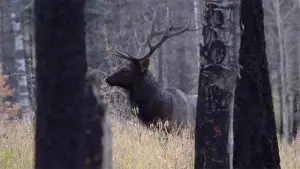Just as cow elk favor the same calving areas year after year, bull elk also tend to use the same areas year after year during the rut. For those that know what to look for, finding a previous year’s rut sign can reap huge dividends come September and October.Tree and sapling rubs are the most obvious signs of previous rut activity, but when it comes to leading you to where the bulls will be rutting in the coming season, not all rubs are equal.

When you see the big rubs, those thick, tall rubs on trees on the forested slopes, dark timber and hillside benches…those are from the bulls rubbing off their velvet. A lot of that, not all, but a lot of that happens generally early…big bulls first ( they drop first, they start growing first and they rub first) and those rubs won’t be far from where you are seeing the bulls in early season, before the rut really takes place.

But when you find those old blown up saplings, 3 to 7 foot saplings, juniper trees and jack pines blown up in and around parks, small meadows or travel corridors, that rut sign is from bulls with cows or bulls trying to attract cows by displaying or warning other bulls to stay away.
When you find THAT sign, that is a rut staging area and a great place to mark on your list for a visit in the upcoming season.



Thanks, Nick Bromley for elkbros.com